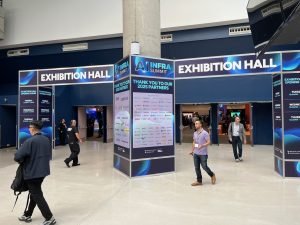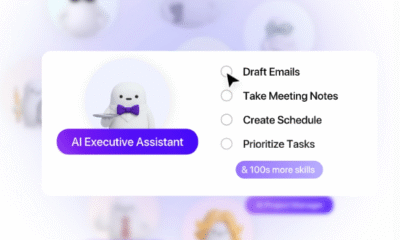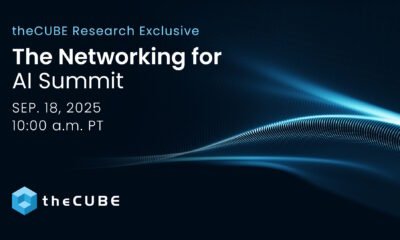Tools & Platforms
GlobalFoundries buys RISC-V chip firm MIPS to accelerate its AI ambitions
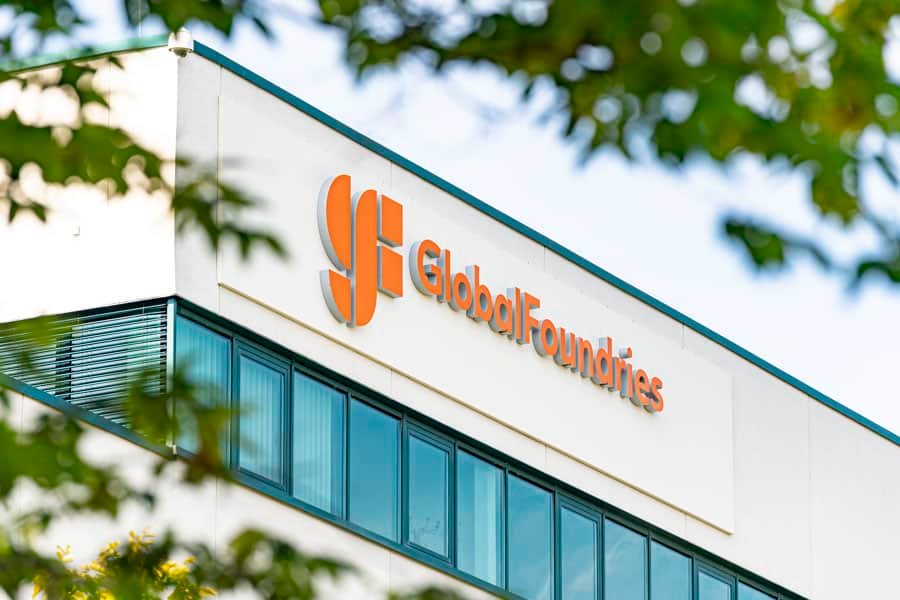
U.S. chipmaker GlobalFoundries Inc. is moving into the RISC-V processor business after announcing plans to buy the chip developer MIPS Technology LLC for an undisclosed price.
GlobalFoundries said it plans to let MIPS continue to operate as a standalone business, but the acquisition will also allow it to design and build its own processors based on the RISC-V instruction set architecture, which rivals x86 and Arm-based chips. Instruction sets are a collection of technologies that can be used to build central processing units. They describe the computing operations that the millions of transistors on a chip should carry out.
MIPS is an old name in the semiconductor industry, having been founded back in 1985, when it launched with chips for personal computers and servers based on the legacy MIPS architecture. Since then, MIPS has been bought and sold multiple times, and in the last decade it abandoned the old MIPS architecture and pivoted to RISC-V.
The acquisition brings a bunch of interesting technologies into GlobalFoundries’ portfolio, including intellectual property for general-purpose central processing units, artificial intelligence inference accelerators and various RISC-V-based sensors.
MIPS’ most recent processors are its Atlas CPUs, which are based on the latest RISC-V ISA instruction set, and include a range of different cores that are aimed at both general-purpose and real-time processing workloads. It also sells specialized versions for edge AI applications, offering high performance compute with low-power consumption.
GlobalFoundries said the acquisition will bolster its ability to sell integrated semiconductor solutions to a wider variety of end markets, particularly the AI industry. It also hints at the company’s plans to evolve from being a mere contract chip manufacturer to one that offers more integrated semiconductor solutions. Analysts say GlobalFoundries may well look into leveraging MIPS’ technologies to design its own RISC-V processors, in a move that may well put it in direct competition with several of its customers, who use its chip fabs to manufacture the processors they design.
Tom’s Hardware speculates that the acquisition also brings benefits to MIPS, as it means it will gain access to differentiated process nodes and a global network of semiconductor fabrication plants. That could mean MIPS can get its chips to market more quickly than before, and may help it to compete for orders from customers such as the U.S. Department of Defense. It requires its chips to be built at secure production facilities, where they can’t be interfered with. That said, the integration of the two companies will be a slow process, potentially taking several years to complete.
GlobalFoundries President and Chief Operating Officer Niels Anderskouv said MIPS will allow it to offer more flexible solutions to customers, so they can build superior products. “This acquisition will be a powerful step forward to push the boundaries of efficiency and performance across a broad range of applications in automotive, industrial and datacenter infrastructure,” he said.
Investors were clearly impressed with the company’s new vision, as GlobalFoundries stock rose almost 7% after the acquisition was announced.
Because MIPS will operate as a standalone business within GlobalFoundries, it will continue to maintain its existing relationships with other customers and foundries, said MIPS Chief Executive Sameer Wasson. He hailed the deal as a “bold new chapter” for the company.
“GlobalFoundries’ proven track record in delivering differentiated technologies through a secure, global manufacturing footprint will enhance our ability to accelerate innovation and scale our solutions, unlocking new opportunities in the physical AI space and driving even greater value for our customers,” he added.
The acquisition is slated to close in the second half of the year, subject to customary regulatory reviews and closing conditions.
Photo: GlobalFoundries
Support our open free content by sharing and engaging with our content and community.
Join theCUBE Alumni Trust Network
Where Technology Leaders Connect, Share Intelligence & Create Opportunities
11.4k+
CUBE Alumni Network
C-level and Technical
Domain Experts
Connect with 11,413+ industry leaders from our network of tech and business leaders forming a unique trusted network effect.
SiliconANGLE Media is a recognized leader in digital media innovation serving innovative audiences and brands, bringing together cutting-edge technology, influential content, strategic insights and real-time audience engagement. As the parent company of SiliconANGLE, theCUBE Network, theCUBE Research, CUBE365, theCUBE AI and theCUBE SuperStudios — such as those established in Silicon Valley and the New York Stock Exchange (NYSE) — SiliconANGLE Media operates at the intersection of media, technology, and AI. .
Founded by tech visionaries John Furrier and Dave Vellante, SiliconANGLE Media has built a powerful ecosystem of industry-leading digital media brands, with a reach of 15+ million elite tech professionals. The company’s new, proprietary theCUBE AI Video cloud is breaking ground in audience interaction, leveraging theCUBEai.com neural network to help technology companies make data-driven decisions and stay at the forefront of industry conversations.
Tools & Platforms
US Senator Cruz Proposes AI ‘Sandbox’ to Ease Regulations on Tech Companies
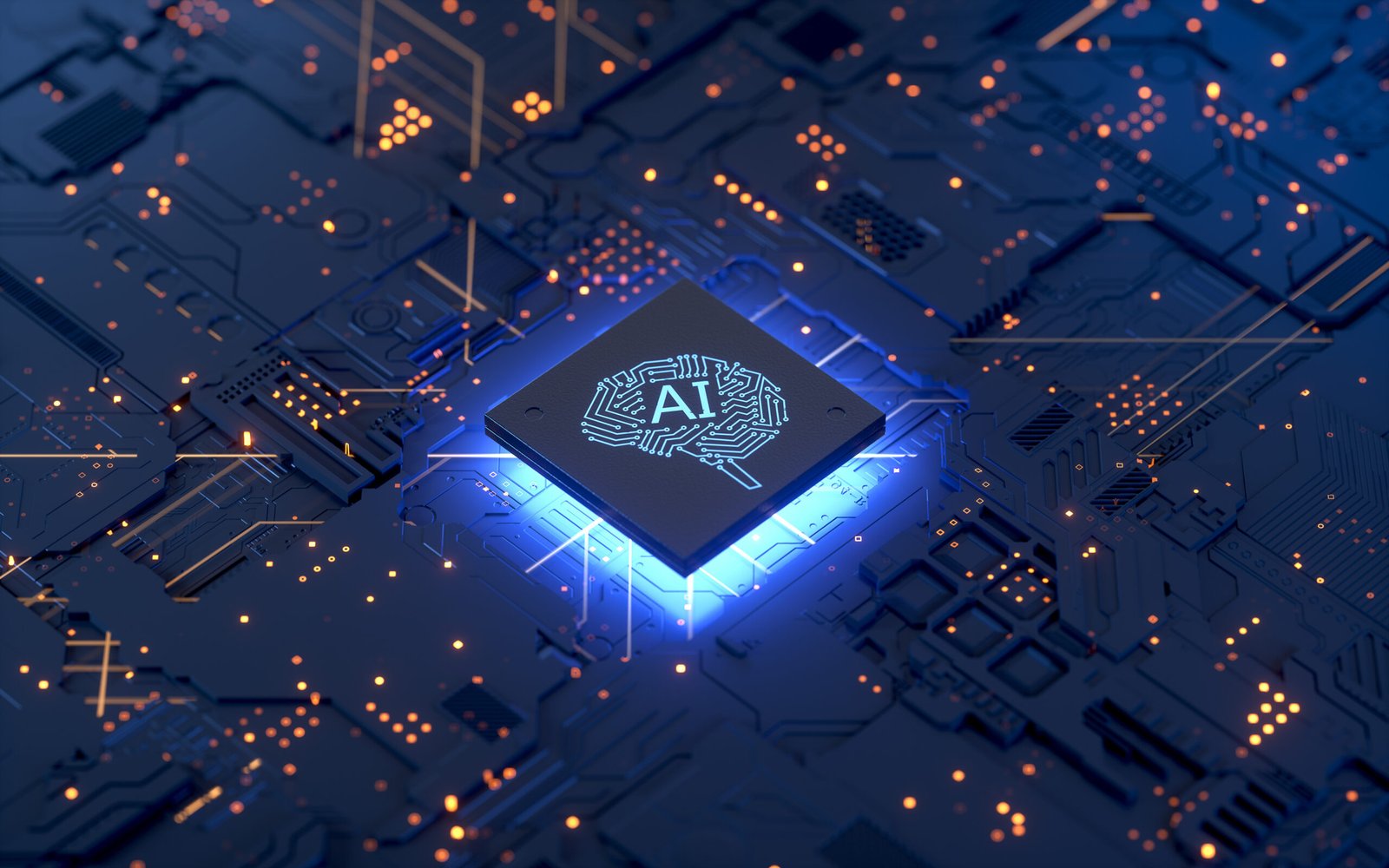
Republican U.S. Senator Ted Cruz introduced a bill on Wednesday that would let artificial intelligence companies apply for exemptions to federal regulation to help them experiment in developing new technology.
Cruz leads the Senate Commerce Committee, which held a subcommittee hearing on Wednesday about ways Congress can lower regulatory hurdles for the tech industry to give U.S. companies a boost in competing with China.
“A regulatory sandbox is not a free pass. People creating or using AI still have to follow the same laws as everyone else,” Cruz said at the hearing.
If passed by Congress, the bill would allow agencies that oversee federal regulations to consider applications from companies to be exempt from regulations for two years at a time, and require companies to outline the potential safety and financial risks and how they would mitigate them.
Consumer rights advocacy group Public Citizen raised concerns about provisions in the proposal that would allow the White House’s Office of Science and Technology Policy to override decisions by agency heads, and said the proposal “treats Americans as test subjects.”
“The sob stories of AI companies being ‘held back’ by regulation are simply not true and the record company valuations show it,” said J.B. Branch, Public Citizen’s Big Tech accountability advocate.
Cruz’s sandbox bill does not include a ban on state regulation, something that the tech industry has sought and the White House has said is necessary to boost innovation. A bid to put a ban in place as part of President Donald Trump’s tax-and-spending bill was defeated in the Senate on a 99-1 vote in July.
OSTP Director Michael Kratsios said at the hearing that Congress should reconsider the issue.
“It’s something that my office wants to work very closely with you on,” he told Cruz at the hearing.
Topics
USA
InsurTech
Legislation
Data Driven
Artificial Intelligence
Tech
Was this article valuable?
Here are more articles you may enjoy.
Interested in Ai?
Get automatic alerts for this topic.
Tools & Platforms
Recycling facility uses AI to transform waste management
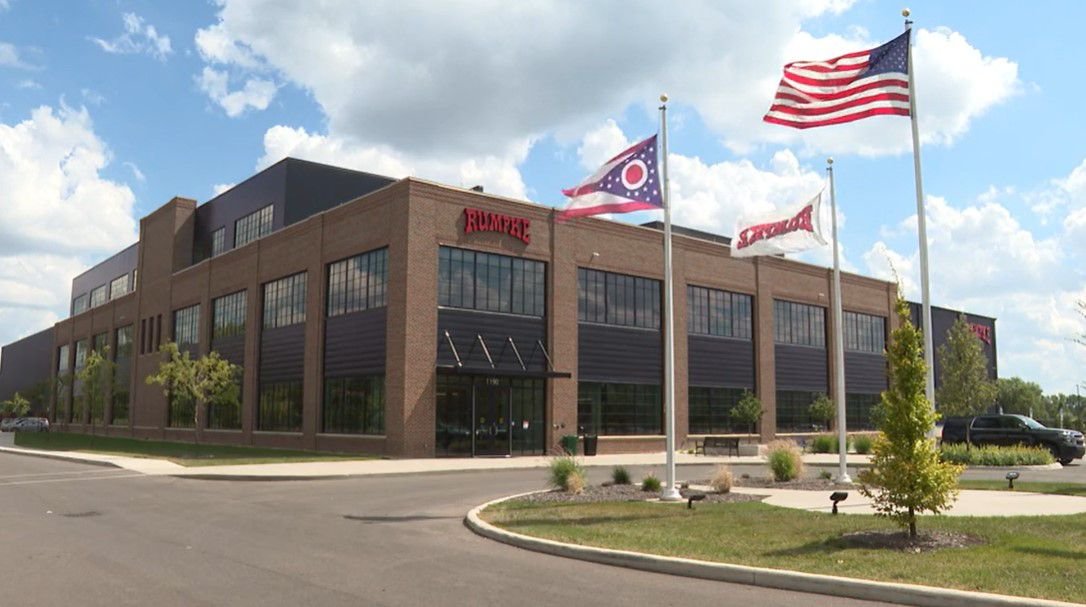
COLUMBUS, Ohio — A new high-tech recycling center in central Ohio is transforming the way recyclables are processed, and it’s putting artificial intelligence to work in a big way.
Rumpke Waste & Recycling, a family-owned company with more than 90 years of experience, has opened what it calls the most advanced recycling facility of its kind in North America.
At 226,000 square feet, the $100 million plant in Columbus is designed to process up to 250,000 tons of recyclables each year.
“We can do that at a rate of 60 tons per hour,” said Amanda Pratt, Rumpke’s Senior Vice President of Communications.
With 19 optical scanners, four ballistic separators, and cutting-edge AI technology, the facility sorts and separates each item with incredible precision.
“We’re built for growth. We’re built for the population of today as well as the population well into the future,” Pratt said.
The process begins on the tipping floor, where trucks unload loose materials collected from homes and businesses. From there, the materials are loaded onto a conveyor with a drum feeder and sent to spinning tubes called trommels.
“Those spinning trommels remove materials or separate materials according to size,” she explained.
Then, the sorted material moves along a conveyor to the presort line, where employees manually remove any items that shouldn’t be in the recycling stream.
“Next up, the material reaches a set of ballistic separators,” she continued.
These separators split the paper and fiber materials from the rest, sending them to different conveyors. Then come the optical sorters, some of which are powered by artificial intelligence, identifying and sorting materials based on shape, size and even color. After that, metals are separated, such as aluminum and steel.
The last step is baling, compressing the materials into massive blocks before they’re shipped out. They weigh between 800-2,000 pounds each.
“And the best part is about 80% of the material that we’re processing right here, stays in the state of Ohio and is sent to manufacturers right here in the central Ohio area who are turning your recyclables into new products,” she said.
Some of the recycled material becomes everyday items like irrigation pipe, detergent containers, lotion bottles, aluminum cans, and even alcohol bottles.
The facility also includes an interactive Education Center, developed in partnership with COSI and The Ohio State University. It’s designed to help the public learn about the recycling process and the role it plays in building a more sustainable future.
From start to finish, artificial intelligence is helping Rumpke Waste & Recycling sort materials faster and more accurately than ever before, offering a glimpse at the future of recycling, and the environmental innovation happening in central Ohio.
Tools & Platforms
AI’s New Cloud King: Oracle’s Rally Could Rewrite ETF Playbooks – ARK Next Generation Internet ETF (BATS:ARKW), Global X Artificial Intelligence & Technology ETF (NASDAQ:AIQ)
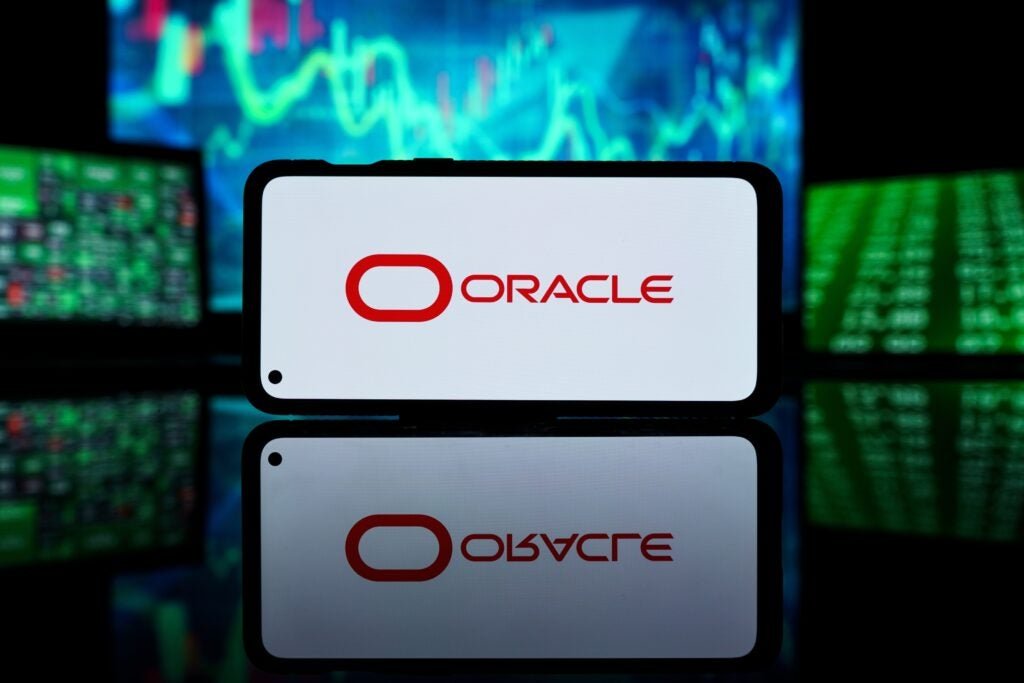
Oracle Corp’s ORCL shares soared over 40% on Wednesday, a day after posting its earnings powered by booming demand for AI infrastructure, pushing CEO Larry Ellison ahead of Tesla Inc TSLA scion Elon Musk as the world’s wealthiest individual.
Beyond the headline wealth change, the move has considerable implications for ETFs, showing how AI infrastructure is becoming more integral to broad-market and thematic funds alike.
Oracle’s profits highlighted the company as a prime supplier of data center space and cloud computing for AI use. With an eye-popping $455 billion AI services backlog and multi-billion-dollar contracts such as providing OpenAI with 4.5 gigawatts of energy to power ChatGPT, Oracle made it clear to the world that it is more than a software behemoth now.
Impact On ETFs
For holders of broad-market ETFs, Oracle’s rise comes with an immediate impact on portfolio weightings. Sector-specific ETFs like Technology Select Sector SPDR XLK and Vanguard Information Technology ETF VGT stand to gain, as Oracle moves higher in the ranks of the most heavily weighted tech names. Both funds are up around 1.5% on Wednesday.
Thematic ETFs on AI, cloud, and next-generation technologies are also being rewired. If Oracle crosses $1 trillion in valuation, it joins a very exclusive group. That milestone might spark reappraisals by active managers and ETF issuers alike, potentially creating new “AI infrastructure” baskets or raising its inclusion in existing thematic funds.
Others like Global X Cloud Computing ETF CLOU, WisdomTree Artificial Intelligence & Innovation Fund WTAI, and ARK Next Generation Internet ETF ARKW might have to change exposure to reflect Oracle’s new leadership in AI infrastructure.
The ripple effects even extend to ETFs with broader innovation themes. For example, both iShares Exponential Technologies ETF XT or Global X Artificial Intelligence & Technology ETF AIQ track companies positioned to benefit from AI adoption.
Oracle’s repositioning as a critical AI infrastructure player makes it harder for ETF managers to overlook.
The Bigger Picture For ETF Investors
Investors seeking to capitalize on the AI boom have several options for gaining diversified exposure to the companies driving this growth, rather than betting on individual stocks.
This episode shows a larger trend: AI-fueled growth is no longer the exclusive domain of mainstream software or chip stocks. ETFs are keeping pace with the industry, providing investors with vehicles to harness both broad-market tech appreciation and thematic exposures in AI, cloud, and enterprise infrastructure.
Oracle’s explosive growth shows how the fortunes of a single company can cascade through dozens of ETFs, affecting flows, weightings, and sector performance.
Read Next:
Image: Shutterstock
-

 Business2 weeks ago
Business2 weeks agoThe Guardian view on Trump and the Fed: independence is no substitute for accountability | Editorial
-
Tools & Platforms4 weeks ago
Building Trust in Military AI Starts with Opening the Black Box – War on the Rocks
-

 Ethics & Policy2 months ago
Ethics & Policy2 months agoSDAIA Supports Saudi Arabia’s Leadership in Shaping Global AI Ethics, Policy, and Research – وكالة الأنباء السعودية
-

 Events & Conferences4 months ago
Events & Conferences4 months agoJourney to 1000 models: Scaling Instagram’s recommendation system
-

 Jobs & Careers2 months ago
Jobs & Careers2 months agoMumbai-based Perplexity Alternative Has 60k+ Users Without Funding
-

 Education2 months ago
Education2 months agoVEX Robotics launches AI-powered classroom robotics system
-

 Podcasts & Talks2 months ago
Podcasts & Talks2 months agoHappy 4th of July! 🎆 Made with Veo 3 in Gemini
-

 Education2 months ago
Education2 months agoMacron says UK and France have duty to tackle illegal migration ‘with humanity, solidarity and firmness’ – UK politics live | Politics
-

 Funding & Business2 months ago
Funding & Business2 months agoKayak and Expedia race to build AI travel agents that turn social posts into itineraries
-

 Podcasts & Talks2 months ago
Podcasts & Talks2 months agoOpenAI 🤝 @teamganassi


